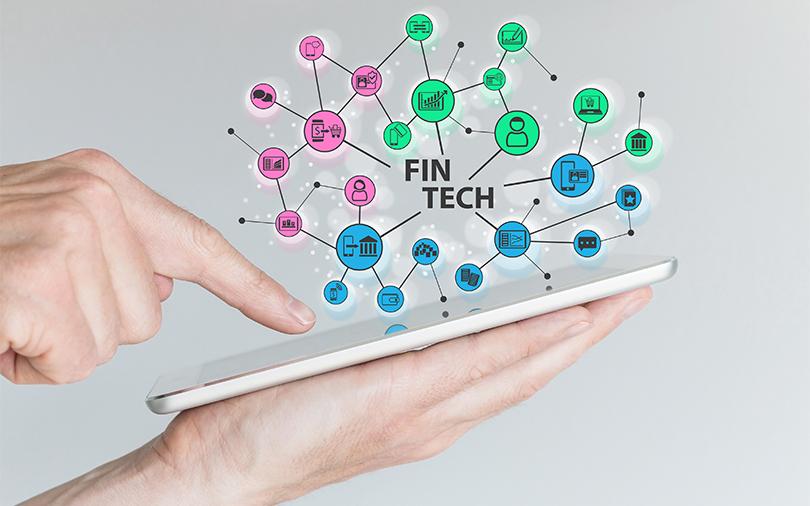Looking back, 2017 was a year of many remarkable achievements for the country. Indian Polar Satellite Launch Vehicle set a world record in a single mission, launching 104 satellites in orbit. The much awaited 17th FIFA U-17 World Cup was organized in India and became the most attended football World cup. In June’17, India's biggest tax reform in 70 years of Independence was launched -Goods & Services Tax. This was the year of embracing change and innovation at all levels. Narrowing it down to financial services, technology has been at the core of recent developments.
• Coopetition and not competition between incumbents and Fintechs. In 2017, almost 46 strategic partnerships and deals took place between financial institutions and fintech innovators. (According to PwC research, over 95% of financial services incumbents seek to explore FinTech partnerships)
• With over 1 billion mobile phones, 325 million broadband connections and 306 million new bank accounts, India became a case study in digital financial inclusion, driven by the Jan Dhan Yojana, Aadhaar and mobile (JAM)
• Mobile is the new bank with payments dominating the share - 61 banks live on UPI in Nov 2017 with a transaction value at Rs 9,679 crore compared to 30 banks and Rs100 crore transaction value in November 2016
• Investments in the fintech space in India also witnessed frenzied activity this year, with total value of investments jumping by 388% from $383 million in 2016 to $1,868 million in the first three quarters of 2017, according to industry database CB Insights
Ending 2017 on an optimistic note, there's much more that can unfold in 2018. Aggregation of multiple me-too fintechs is definitely expected, along with acquisition by incumbents. Technologies like AI, Machine learning, Blockchain and IoT are moving beyond the headlines and in the day-to-day lives of people. Let's take a look at the trends that will dominate and affect most individuals and institutions in 2018.
1. IoT becomes BIoT
IoT, one of the biggest phenomenons in technology is connecting billions of devices around us so that users can do things like ask Amazon’s Alexa digital assistant to unlock the door or order food. According to Gartner, the consumer segment is the largest user of connected things with 5.2 billion units in 2017 and the overall segment is expected to grow to 31 billion in 2020 worldwide. Interestingly, Blockchain technology has been gaining significance with investors and institutions globally with over a billion dollars being invested in 2017. By 2020, 20 percent of global trade finance expected to move to distributed ledgers.
Combining IoT with blockchain —or BIoT with Blockchain as an underlying technology for an IoT network creates a digital record across hundreds or thousands of computers, vastly reducing the risk of hacking and opening doors for a host of new services and businesses. For example, BIoT can be used to create smart frameworks and cities with connected heating systems for efficient energy use or track shipments in manufacturing narrowing it down to the last component and analyzing the entire data with real-time inputs. With BIoT accessing real-time data for all members of supply chain is as easy as browsing a website on mobile phone and companies and consumers can also be assured that their most valuable data on the blockchain cannot be hacked.
With NITI Aayog's announcement on building the country’s largest blockchain network – IndiaChain – to reduce frauds, speed up enforcement of contracts, increase transparency, etc. BIoT could be a definite reality in the coming months.
2. Data-driven Financial inclusion
We know that more data has been created in the past two years than in the entire previous history of the human race, but the sheer volume will leave you amazed - our current output of data is roughly 2.5 quintillion bytes a day (one followed by 18 zeros!)
According to an interesting infographic released by Domo, called Data Never Sleeps 5.0 - Uber is taking 45,787 trips each minute, Spotify adding 13 new songs; we tweet 456,000 times, post 46,740 Instagram photos, Google 3.6 million searches, and publish 600 new page edits on Wikipedia each minute. The Internet also copes with 103,447,520 spam emails every minute.
There are millions of servers recording this data, which has widespread applications, from banking credit lines to provision of off-grid solar systems or build better products for consumers, albeit personalization or provide healthcare services to the poor. This data is the source for alternative credit scoring models for unbanked or underbanked individuals, hence proving especially useful when it comes to financial institutions and form the backbone of the nascent P2P lending industry, which is expected to grow at a CAGR of 48% y-o-y between 2016 and 2024 (Source: Transparency Market Research). Morgan Stanley has predicted that P2P Marketplace lending is likely to command $490 billion globally by 2020.
With definite guidelines in place for P2P lenders in India and a strong backing of the world's biggest financial inclusion initiative (holds a record in Guinness Book of Records with 30.67 cr beneficiaries) - Pradhan Mantri Jan Dhan Yojna, opens immense possibilities of bringing folks under the ambit of formal banking. Data points like transaction history and behavioral patterns are being recorded and used to provide banking credit lines and promoting inclusion.
3. Empowering entrepreneurs and institutions across sectors
When we think of Fintech startups and their impact, most of us limit ourselves to payments and lending solutions and how banking is becoming easier. However, domains like cyber-security, workflow management and smart contracts amongst others, are gaining momentum on the back of Fintech revolution and have multi-fold effect across sectors. For instance, workflow management solution for SMEs/MSMEs is empowering the industry contributing to 30% of India's GDP and helping them manage their working capital, payrolls, vendor payments, etc. Forex and trade solutions provided by Fintechs target faster issuing and processing of LC, digitalizing trade documents and automated regulatory compliance using artificial intelligence which in turns impacts the USD 26.2 billion (in Nov'17) export industry in the country.
While Blockchain is gaining momentum as the underlying technology behind the crypto-currency bitcoin, it has immense applications in industries like manufacturing and healthcare. Still nascent in India, there is a host of use cases being developed for the creation of a central registry to hold health records of the entire population. Such an implementation will be of great help to doctors (for consulting the past medical history) as well as insurance companies. The concept of distributed ledgers makes sharing and authenticating the user of data easier and more secure. Smart contracts have applications for providing e-bank guarantees, online land registration as well as e-governance. It is only fair to say that Fintechs are creating ripples across multiple sectors aside from Financial Services.
4. More advocates of innovation - Govt & Regulators
Over the last few years, innovation across sectors has been driven by external participants like startups and industry. Fintech is no exception, with PayPal being one of the first online payment platforms starting out in 1998. Now, almost 2 decades later, the ecosystem is flourishing with over 12000 fintech startups globally, 10% of which are in India and have access to over 100+ accelerators and incubators.
Aside from the private sector, Governments globally have taken steps towards facilitating an innovation-driven ecosystem. For instance, The Financial Conduct Authority (FCA), UK driving PSD2 regulations to encourage open innovation framework or Monetary Authority of Singapore (MAS) setting up Fintech & Innovation Group within its organization to develop regulatory policies to facilitate the use of innovative technology and also encourage collaborations via their annual Singapore Fintech Festival. The Australian Securities & Investments Commission (ASIC) has also created an Innovation Hub to assist Fintech start-ups developing innovative products or services to navigate the Australian regulatory system.
The government of India has also played a pivotal role in encouraging innovation in the last few years. Initiatives like Startup India with a dedicated fund of INR 10000 cr, Smart India Hackathon for crowdsourcing ideas of definite problem statements; DRDO Cyber challenge and India Innovation growth program amongst others are encouraging the innovative mindset amongst the young guns. The role is evolving, from monitoring and suggesting policies of how the world operates today to an advocate of how the world can be tomorrow. Indiastack, set of open APIs and Indiachain- country's largest blockchain are steps towards that direction, enforcing that 2018 will witness forthcoming initiatives from the Govt and regulator for the next-gen-disruptions.
5. Blurring the doors of reality: AR/ VR
First dreamt of in 1935 by Stanley Weinbaum when a pair of spectacles would transport a user to any desirable place with a complete sense of being - sight, sound, smell and touch and several decades later came VR headsets with a whooping cost of $ 10000/-. The concept of virtual reality has been around for a while, but what seems to catch up is affordability and people's fascination with the technology.
Augmented reality caught multiple headlines especially when Pokemon Go was launched. Aside from entertainment, AR opens possibilities that can affect billion dollar industries, like retail and tourism. Imagine walking down a street in a foreign county and seeing all signs info translated in your native language, thanks to your sunglasses or being in a store and seeing the entire collection of the brand on a virtual mannequin resembling you or seeing the latest personalized stats when watching a live cricket match.
AR and VR are very useful when it comes to engaging customers esp. in Banking and Financial services where even the existing customers are not very keen on interacting with the Bank. For instance, an investment app that transforms blocks of data into a more immersive trading environment, with the portfolio representing a city and each stock representing a building. Fidelity's Stockcity app (launched in 2014!) already uses Oculus Rift to simulate the investment cityscape. The possibilities are immense and top brands are taking a notice to bring more engaging experiences to their customers. Revenue from VR is expected to hit $162 billion or more by 2020 from $5.2 billion in 2016, according to IDC Research. Much hype and less reality seem to come around the corner with giants like Apple and Google investing in the technology with 2018 finally being the year when people start living an augmented life.
Aside from these 5 trends, we look forward to a host of developments with payment banks, fintechs and digi-banks coming up in the financial services industry. According to the Millennial Disruption Index, a three-year study that surveyed 10,000 millennial' s in about 73 companies spanning 15 industries finding out that the banking sector was at the highest risk of disruption. Thirty-five percent of millennial' s don’t even believe they’ll need a brick & mortar bank five years from now and are more excited about offerings from Apple, Amazon or Google. There are more and more informed consumers looking for quality services and the incumbents are facing the heat. DBS launched their digi-bank in 2016 and SBI has announced their plans to launch branchless banking called SBI Digi Bank but with a billion strong market opportunity, we cannot rule out the possibility of someone with deep pockets like an Amazon entering the FS industry or a Monzo setting up operations in India and taking the biggest piece of the pie.
While these are some expectations from 2018, an in-depth survey was conducted by YES BANK– India Fintech Opportunities Review (IFOR) to analyze the landscape of Fintech startups in India. The analysis of survey data will share information on parameters like stage, domain, funding status, challenges, and business focus for the year along with a host of other details, benchmarking the Indian Fintech ecosystem along with the global fintech hubs. Stay tuned for upcoming report and the comprehensive analysis of the survey at http://www.yesfintech.com/ifr2017.
Brand Solutions is a marketing initiative for sponsored posts. No VCCircle journalist was involved in the creation of this content.






